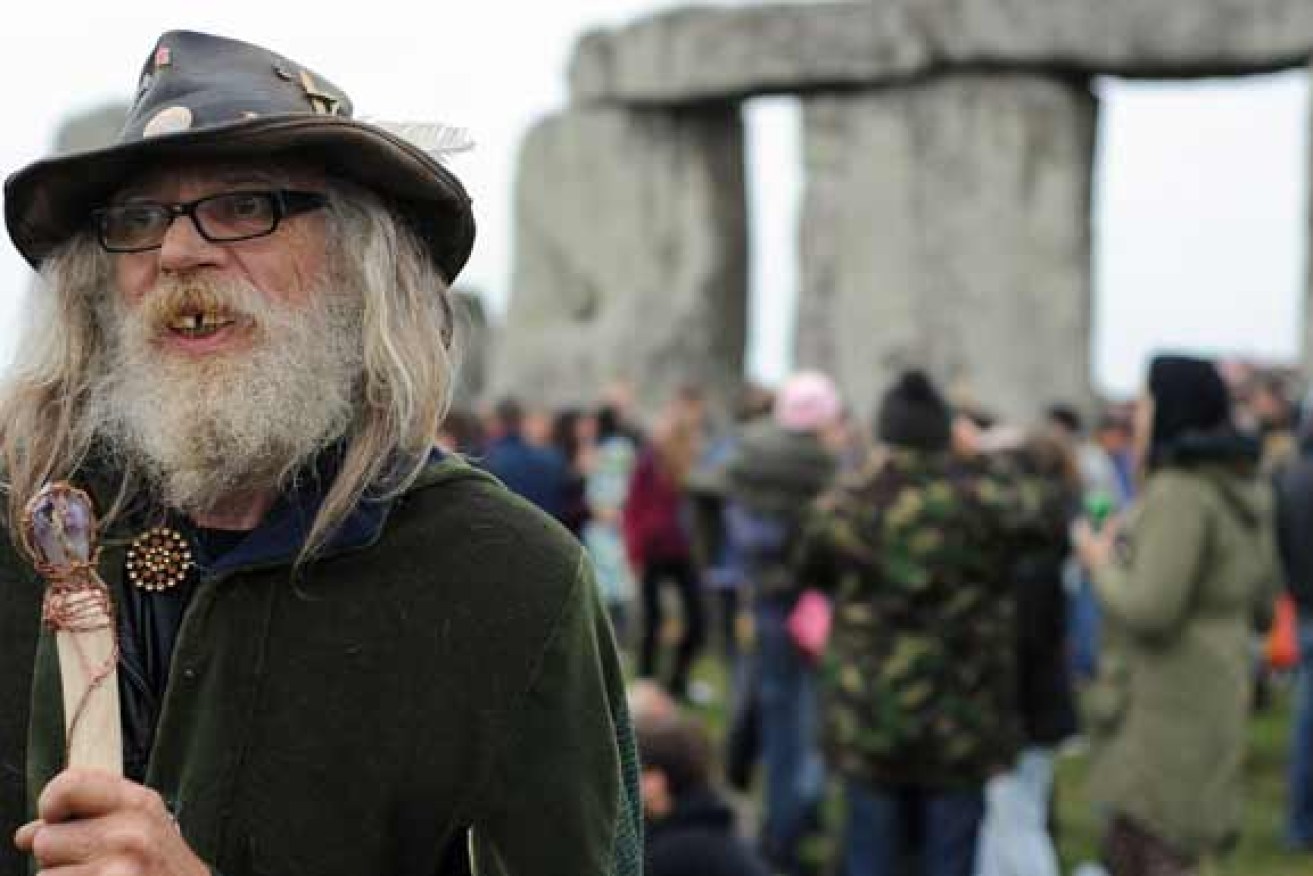Druids, pagans flock to Stonehenge to celebrate the solstice


AAP
Stonehenge was alive with the throng of 23,000 sun-worshippers present to mark the longest day of the year in the northern hemisphere.
People with flowers in their hair and playing drums and accordions showed up at the site in Wiltshire, south-west England, to see the sun rise on Sunday.
The solstice is celebrated by pagans around July 21 and the word means the standing still of the sun, in reference to the sun reaching its highest point before creeping back down in the sky.
• GALLERY: See the faces of stonehenge revellers
• Intense amps, angry elbows and nudie swims
• Secret history: The world’s best ruins
The main stones at Stonehenge, a World Heritage Site, are thought to have been erected in around 2500 BC.
The sun rises in alignment with some of the main stones at the monument and experts believe that Stonehenge was built as a prehistoric temple.
Thousands of people including modern-day druids flock to the site every year to celebrate the solstice, which is also the official start of summer.
Attendance was down on the 36,000 who went to Stonehenge for last year’s summer solstice.
Superintendent Gavin Williams, who led police at the scene, said nine people had been arrested, mainly over alleged drug offences, a lower figure than in previous years.
“Solstice 2015 has been a great success with approximately 23,000 people celebrating at Stonehenge in the positive, friendly atmosphere as they waited for the sunrise,” he said.
– with AAP








